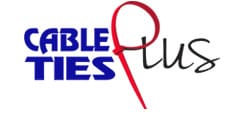Heat shrink tubing is a safe and affordable solution for protecting your electrical systems. But only if you know what you’re doing.
Getting Started
This is the easy part. Cable Ties Plus carries a range of products that meet criteria for any industrial, commercial or residential project. If you’re not sure where to start, give us a call and let an experienced tech help, or use the live chat feature available on the website.
Next, you will need a quality heat gun. Choose carefully. Not all devices fit all purposes. An electrician may require a calibration feature that a lobster fisherman wouldn’t. Again, feel free to contact us here at Cable Ties Plus for assistance.
You also need a pair of scissors.
Prepare
Depending on the severity of your project, consider eye protection, gloves, and a breathing device to avoid inhaling fumes. Also, we recommend not wearing loose or baggy clothes. Watch for hanging items such as chains, bracelets and hair.
Make sure the work area is free of clutter. Even what appears to be harmless debris can become a hazard. Pick up, dust or sweep before starting. If working indoors, ensure the space is well ventilated, even if wearing a mask. Of course, all this may not be possible if you’re dealing with systems inside walls or floors. But it is still critical that you remain mindful of the risks.
Lastly, never point the heat gun at yourself or anyone else. This may sound obvious, but you’d be surprised how many EMTs have rushed to an accident where even a seasoned pro hadn’t imagined what could happen.
The Process
The tubing’s shrink ratio has to result in a tight fit. As these products come in a range of diameters, select one large enough to fit comfortably over the area that still promises to snugly cover the area after shrinkage.
Cut the desired length of tubing, keeping in mind it shrinks lengthwise. Measure carefully, allowing for at least a ¼” overlap if you’re including connectors or insulation. Slide the tubing in place. If you’re splicing cables or wires, center the tubing between the splice, ensuring equal overlap on both sides. Some professionals use a little lubricant spray to help guide tubing easily.
Before applying heat, know the manufacturer’s recommended heating temperature. Too much or too little heat defeats the purpose, causing uneven shrinkage, insulation failure, or even physical damage. DO NOT use open flames.
Use the heat gun to shrink one end of the tubing and gradually work down to the other. Apply heat steadily, rotating the object, making sure shrinking is even and there are no air bubbles. You don’t want brittle or charred tubing. The best way to sidestep this is to avoid lingering on any one area too long.
And that’s it. It may seem like a lot of work, but it’s a quick and easy process once you know what you’re doing.




